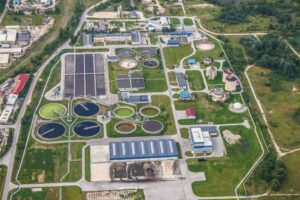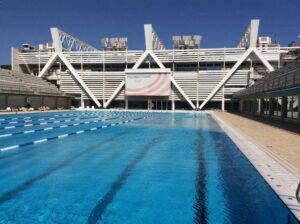04/29/2024 | Swimming Pool & Spa | 13 MINUTE READ
How to Balance Pool Water with Chemical Feed Pumps and pH Electrodes

Maintaining a pristine pool or spa isn’t just about crystal-clear water and inviting temperatures; it’s about creating a safe and enjoyable environment for swimmers. Achieving this requires meticulous attention to detail and a deep understanding of the complex chemistry involved in water maintenance.
At the heart of effective pool management lie three key components: chemical feed pumps, pH control probes, and robust sanitation methods. Together, they form the backbone of water balance and sanitation, ensuring the water remains clean, clear, and free from harmful contaminants.
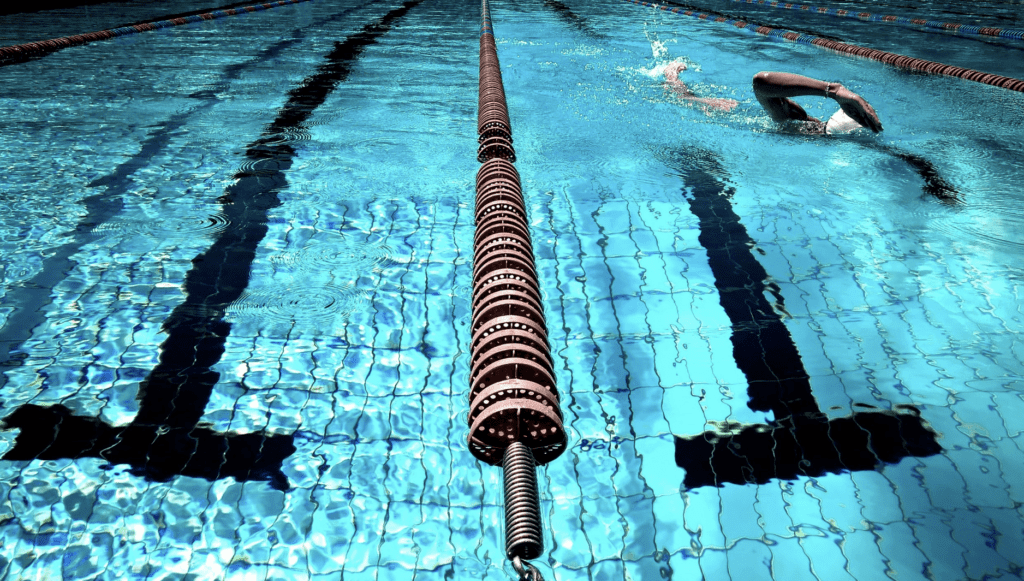
Understanding Chemical Feed Pumps
Chemical feed pumps are the workhorses of pool maintenance. They accurately and reliably deliver essential chemicals into the water, maintaining water quality by ensuring that chlorine, pH adjusters, and other necessary substances are distributed evenly throughout the pool or spa.
Explanation of Chemical Feed Pumps
These dosing or metering pumps are designed to inject precise amounts of chemicals into the water system. They draw chemical solutions from storage tanks or containers and meticulously deliver them into the pool circulation system at a controlled rate. Equipped with adjustable settings, they allow for fine-tuning flow rate and dosage, thus facilitating customization based on water volume and desired chemical levels.
Types of Chemical Feed Pumps
In chemical feed pumps, several types are commonly employed to fulfill diverse pool applications. Diaphragm pumps are a popular choice, leveraging a flexible diaphragm to generate a pumping action that ensures accurate and consistent chemical delivery. On the other hand, peristaltic pumps rely on rotating rollers or shoes to compress flexible tubing, thereby propelling chemical solutions through the tubing and into the water system. Electronic dosing pumps emerge as a sophisticated option for larger commercial pools and spas, offering precise control and programmable dosing schedules to meet specific requirements.
Factors to Consider
Selecting an appropriate chemical feed pump entails consideration of various factors critical to its efficacy. Capacity and flow rate are paramount, as they dictate the pump’s ability to deliver sufficient chemicals for the pool or spa size. Chemical compatibility is equally crucial, necessitating careful selection of pumps and materials to avert corrosion or damage to pump components. Moreover, meticulous attention to installation and maintenance procedures is imperative to ensure optimal performance and longevity of chemical feed pumps. This encompasses routine inspection, cleaning, and calibrating pump settings to uphold operational efficiency.
Understanding the chemical feed pump function and selection criteria is essential for effective pool water maintenance. By choosing the right pump and implementing proper maintenance practices, pool operators can ensure consistent and precise chemical dosing, ultimately contributing to a safer and more enjoyable swimming environment.

Achieving Water Balance: Balancing pH and Chemical Levels
Maintaining proper water balance is fundamental to the health and safety of pool and spa users. Central to this balance is the control of pH and the levels of various chemicals within the water. Let’s explore the importance of pH control and the significance of monitoring and adjusting chemical levels for optimal water balance.
Importance of pH Control
pH, which measures the acidity or alkalinity of the water on a scale from 0 to 14, with 7 indicating neutrality, holds paramount significance in pool and spa environments. Maintaining pH within a specific range is indispensable for several compelling reasons. Firstly, it ensures the comfort and safety of swimmers, fostering a climate conducive to leisurely enjoyment by minimizing the risk of skin and eye irritation. Moreover, pH profoundly impacts the efficacy of chlorine and other sanitizers, directly influencing the pool’s disinfection capabilities. By preserving the pH within the correct range, optimal disinfection is achieved, thereby thwarting the formation of harmful by-products. Furthermore, balanced pH levels safeguard pool equipment, shielding pumps, filters, and heating systems from corrosive damage. This preservation of proper pH sustains equipment functionality and extends its operational lifespan, contributing to long-term cost-effectiveness and efficiency.
Role of pH Control Probes/Electrodes
In tandem with pH control, pH control probes, commonly called electrodes, emerge as indispensable tools in monitoring and regulating pH levels within pools and spas. Comprising sensors tasked with measuring the water’s pH, these probes transmit signals to a controller or automation system, facilitating precise adjustments in chemical dosing as necessitated. However, the reliability and accuracy of pH probes hinge upon regular calibration and periodic maintenance. Routine cleaning and calibration endeavors are imperative to uphold the probe’s integrity, ensuring consistently precise readings and reliable performance.
Monitoring and Adjusting Chemical Levels
Moreover, monitoring and adjusting other chemical levels are imperative to sustain water balance alongside pH. Chlorine levels, for instance, must be meticulously maintained within specified parameters to uphold effective disinfection while mitigating the potential for swimmer irritation. Total Alkalinity (TA) and Calcium Hardness (CH) also play pivotal roles in stabilizing water and forestalling pH fluctuations. As warranted, adjustments to TA and CH levels contribute to maintaining water equilibrium.
By prioritizing pH control and monitoring chemical levels, pool operators can achieve optimal water balance, creating a safe, comfortable, and enjoyable swimming environment for all users. Implementing regular testing, calibration of pH probes, and adjustments to chemical dosing ensures consistent water quality and enhances the overall pool experience.
Knowing When to Change pH Control Probes/Electrodes
pH control probes, also known as electrodes, are essential components of pool water management systems. They accurately measure the water’s acidity or alkalinity. Over time, however, these probes may experience wear and degradation, leading to inaccurate readings and compromised water balance. Therefore, it’s essential to recognize the signs indicating when pH control probes or electrodes should be replaced.
Signs of Probe Degradation
Probe degradation manifests through various discernible indicators, warranting astute observation and swift intervention. For instance, if pH readings exhibit erratic fluctuations or a tendency to drift over time, it signals potential deterioration of the pH probe. Such inconsistencies engender improper chemical dosing, compromising water quality and user safety. Moreover, sluggish response times or sporadic behavior in pH readings serve as red flags, indicating suboptimal probe functionality and urging remedial action. Concurrently, a visual inspection of the probe’s physical condition unveils further insights into its integrity. Instances of damage, corrosion, or accumulation of debris on the probe’s surface, evidenced by cracks, discoloration, or fouling, portend the approach of its end-of-life span.
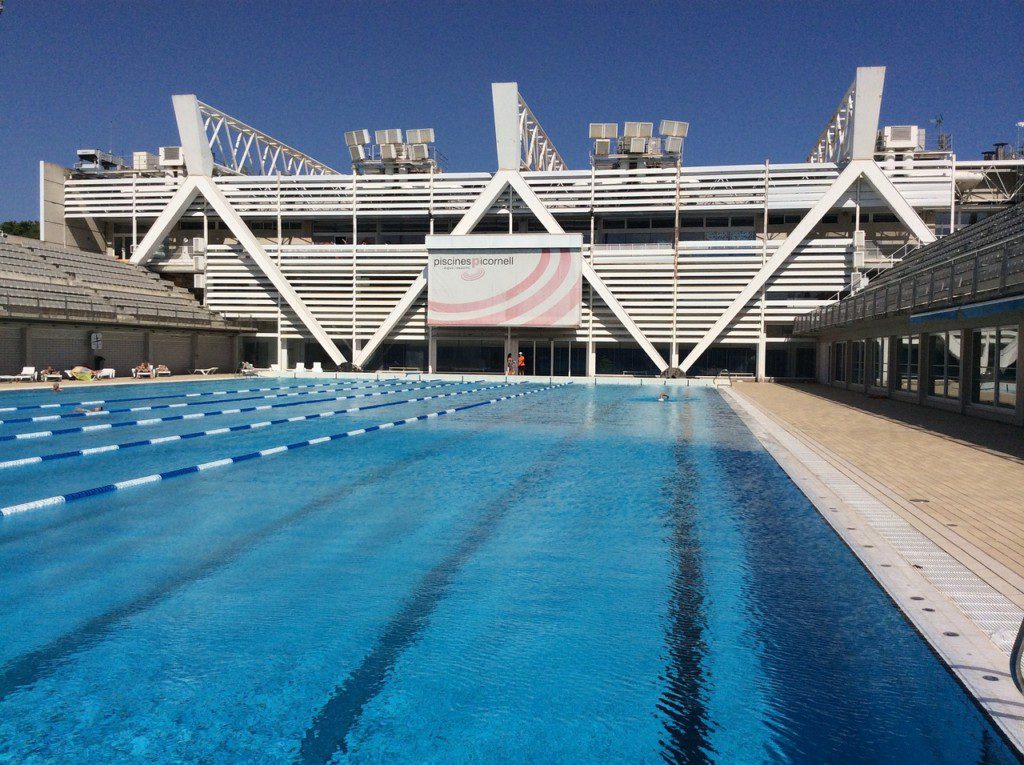
Factors Affecting Probe Lifespan
Several factors influence the lifespan of pH probes, necessitating nuanced consideration. The frequency of probe usage assumes significance, with probes deployed in high-traffic pools or spas enduring more substantial wear and mandating more frequent replacements than counterparts in sparingly utilized facilities. Additionally, prevailing water chemistry plays a pivotal role, as harsh conditions characterized by elevated chlorine levels or extreme pH values accelerate probe degradation. Ergo, meticulous water chemistry maintenance becomes indispensable to prolonging the longevity of pH probes. Regular cleaning, calibration, and maintenance routines are pivotal in preserving probe functionality, mitigating premature degradation, and safeguarding against compromised performance.
Recommended Replacement Schedule
While no fixed timeframe governs the replacement of pH probes, general guidelines suggest intervals of every 1 to 2 years, contingent upon usage patterns and environmental factors. Pool operators are advised to consult manufacturer recommendations and policies tailored to specific probe models, leveraging these insights to inform proactive replacement strategies.
By staying vigilant for signs of probe degradation and following recommended replacement schedules, pool operators can maintain accurate pH measurements and achieve optimal water balance. Proactive maintenance and timely replacement of pH control probes contribute to safer and more enjoyable swimming experiences for pool and spa users.
Ensuring Pool Sanitation
Adequate sanitation is paramount for maintaining a safe and healthy swimming environment in pools and spas. Proper sanitation methods help control the growth of bacteria, viruses, algae, and other contaminants, minimizing the risk of waterborne illnesses and ensuring water clarity. Here’s an overview of crucial sanitation methods and best practices for ensuring pool sanitation:
- Chlorination: Chlorination is a pillar in pool sanitation, revered for its efficacy in eradicating bacteria and thwarting algae growth. It is a potent disinfectant that oxidizes organic contaminants and annihilates pathogens in the water. Pool operators must meticulously regulate chlorine levels within prescribed parameters to uphold effective disinfection while mitigating the potential for skin and eye irritation.
- Bromination: In parallel, bromination emerges as a viable alternative to chlorine, particularly in settings where chlorine sensitivity prevails or in indoor pools and spas. Bromine’s versatility lies in its efficacy across a broader pH range and its enduring activity in hot water environments, rendering it a preferred choice for spa applications. Pool operators must diligently monitor bromine levels, adjusting dosing to sustain proper sanitation.
- Alternative Sanitization Methods: Beyond traditional sanitization methods, alternative approaches offer supplementary avenues to bolster water cleanliness. Ultraviolet (UV) sterilization systems leverage ultraviolet light to eradicate microorganisms, serving as a secondary sanitizer alongside chlorine or bromine. Ozone generators, meanwhile, produce ozone gas—a potent oxidizer and sanitizer—enabling reduction in chlorine demand and enhancement of water clarity. Mineral-based sanitizers, featuring copper and silver ions, offer a natural deterrent against algae growth, lessening reliance on conventional sanitizers.
- Maintenance Practices: Complementary to sanitation methodologies, rigorous maintenance practices are indispensable for preserving water quality. Pool operators must conduct regular water testing to monitor sanitizer levels, pH, alkalinity, and other parameters critical to water balance. A well-maintained filtration system is pivotal in sieving debris and particulate matter from the water, enhancing sanitizer efficacy. The routine inspection and upkeep of sanitation equipment—from chlorinators and brominators to UV systems and ozone generators—is essential to ensure optimal functionality.
- Education and Training: Adherence to regulatory standards and guidelines governing water quality and sanitation practices is imperative. Pool operators must comply with local health regulations, upholding stringent standards to safeguard the health and safety of pool patrons.
By implementing appropriate sanitation methods, conducting regular maintenance, and providing staff training, pool operators can ensure that their facilities offer all users a clean, safe, and enjoyable swimming experience. Adequate pool sanitation protects swimmers’ health and helps maintain the longevity of pool infrastructure.

Best Practices for Pool Water Maintenance
Maintaining pristine pool water requires regular testing, diligent maintenance, and adherence to established best practices. By following these guidelines, pool operators can ensure optimal water quality, minimize the risk of contamination, and provide a safe and enjoyable swimming environment for all users:
- Regular Water Testing: Regular water testing is a foundational pillar in the quest for pristine pool water. Employing reliable test kits or electronic testers, pool operators conduct frequent assessments to scrutinize critical parameters such as pH, chlorine/bromine levels, alkalinity, calcium hardness, and cyanuric acid (CYA). Testing should be conducted at least two to three times weekly, with heightened frequency during heightened usage or adverse weather conditions. Maintaining meticulous records facilitates tracking trends over time, enabling prompt identification of deviations from recommended levels.
- Proper Chemical Balance: With rigorous testing, maintaining proper chemical balance is paramount. Preserving pH levels within the prescribed range (7.2 to 7.8) is instrumental in optimizing sanitizer effectiveness, ensuring water comfort, and prolonging equipment longevity. Adjustments to alkalinity and calcium hardness levels, undertaken as warranted, serve to forestall pH fluctuations and shield pool surfaces from etching or scaling. Additionally, vigilance in monitoring cyanuric acid (CYA) levels and reasonable adjustment of stabilizer content are pivotal in optimizing chlorine effectiveness while precluding excessive buildup.
- Effective Filtration: Effective filtration constitutes an indispensable linchpin in the arsenal of pool maintenance strategies. Regular cleaning and backwashing of sand or diatomaceous earth (DE) filters, or the periodic replacement of cartridge filters, are essential to uphold optimal filtration efficiency. Concurrently, routine filter pressure and flow rate checks and timely cleaning or backwashing endeavors forestall clogging and ensure adequate circulation. Pool operators are encouraged to explore adopting more efficient filtration systems, such as variable-speed pumps or high-rate sand filters, to augment water clarity and curtail energy consumption.
- Routine Maintenance: Routine maintenance rituals are pivotal in preserving the integrity of pool infrastructure and sustaining water quality. Regular inspection and cleansing of skimmer baskets, pump baskets, and hair/lint traps are imperative to forestall blockages and ensure unimpeded water flow. Thorough cleansing of pool surfaces, encompassing walls, floors, and tile lines, serves to obliterate algae, scale, and debris buildup. Concurrently, vigilant oversight of pool equipment—spanning pumps, motors, heaters, and automation systems—ensures optimal functionality and forestalls operational downtime.
- Safety Measures: Safety measures constitute a non-negotiable facet of pool management, underpinning the well-being of pool patrons. Maintaining appropriate signage and safety equipment and vigilantly enforcing pool rules and regulations fosters a safe swimming environment. Regular safety inspections of pool facilities—encompassing fencing, gates, lighting, and non-slip surfaces—minimize the risk of accidents and injuries, fostering a tranquil environment conducive to leisurely recreation.
- Ongoing Education and Training: Ongoing education and training serve as linchpins in fortifying the efficacy of pool maintenance endeavors. Continuous training for pool staff, encompassing water maintenance protocols, chemical handling procedures, and emergency response protocols, fortifies operational competency. Concurrently, educating pool users about proper swimming etiquette, hygiene practices, and the imperative adherence to pool rules fosters a culture of mutual responsibility and safety consciousness.
By implementing these best practices for pool water maintenance, pool operators can uphold high water quality standards, safety, and cleanliness, ensuring a positive experience for all pool users. Regular monitoring, proactive maintenance, and continuous education are essential for achieving and maintaining optimal pool conditions throughout the year.
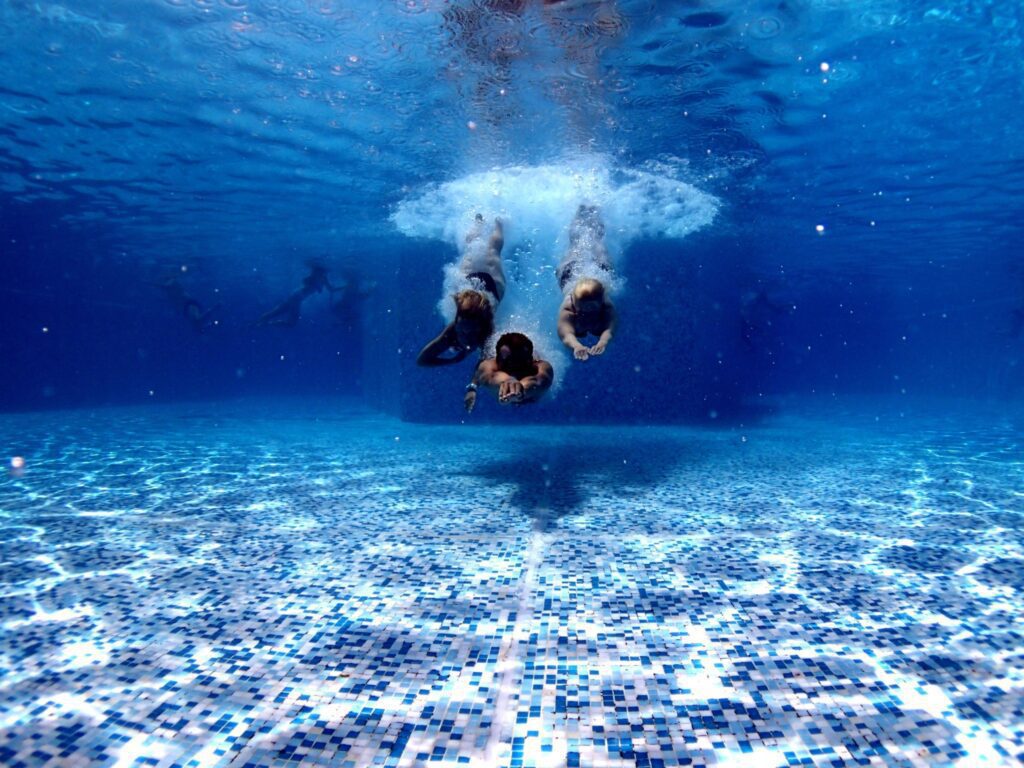
Conclusion
Maintaining a clean, safe, and inviting pool or spa requires careful attention to water balance, sanitation, and routine maintenance. As explored in this comprehensive guide, the critical components of pool water management—chemical feed pumps, pH control probes, sanitation methods, and maintenance practices—work together to ensure optimal water quality and a positive swimming experience for all users.
By adhering to best practices for pool water maintenance, including regular water testing, proper chemical balance, effective filtration, routine maintenance, and safety measures, pool operators can create an environment that promotes health, safety, and enjoyment.
Through ongoing education and training, pool operators must stay informed about industry advancements, regulatory requirements, and best practices for water management. By continuously improving their knowledge and skills, pool operators can uphold high water quality and safety standards, fostering trust and confidence among pool users.
Ultimately, a commitment to excellence in pool water maintenance enhances the swimming experience and contributes to the longevity of pool infrastructure and the facility’s sustainability. By prioritizing water quality and safety, pool operators can create a welcoming and enjoyable environment that delights swimmers of all ages and ensures their continued patronage for years.
Posted by Joshua Samp on April 29, 2024
Sensorex is a global leader in the design and manufacture of quality sensors for water quality and process applications. The company offers more than 2000 sensor packages for pH, ORP, conductivity, dissolved oxygen, free chlorine, chlorine dioxide, UV transmittance and other specialty measurements, as well as a full line of sensor accessories and transmitters. Its expert technical support engineers solve analytical sensor challenges with custom designs and off the shelf products.

